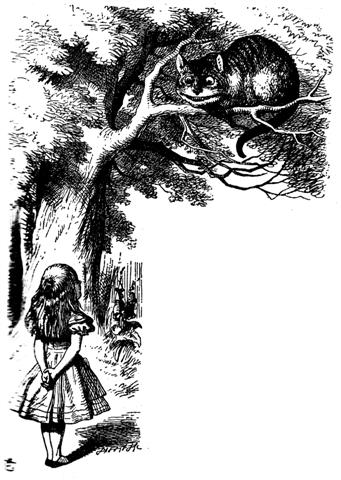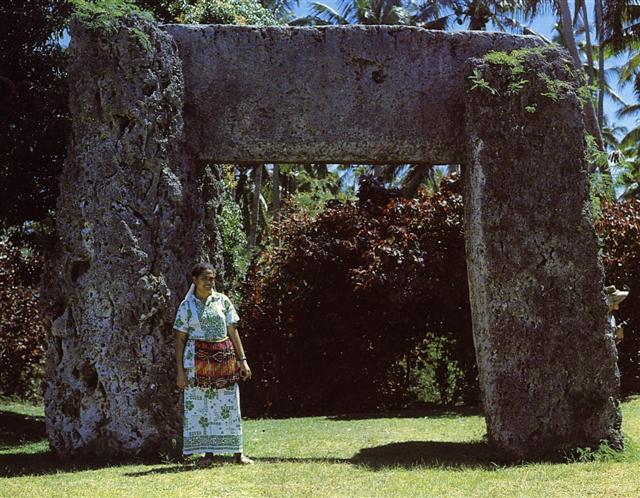62. The swallower of the left eye
could have been alluding to Fom-al-haut (the Mouth of the
southern Fish).
... Among the other ritual coincidences,
perhaps the most remarkable was the death of poor old Willie
Watman, seaman A. B., on the morning of 1 February. Watman was
the first person among Cook's people to die at Kealakekua: on
the ceremonial day, so far as can be calculated, that the King's
living god Kahoali'i would
swallow the eye
of the first human sacrifice of the New Year ...
Mata. 1. Tribe, people; te mata tûai-era-á, the
ancient tribes. 2. Eye; mata ite, eyewitness. 3. Mesh:
mata kupega. 4. Raw, uncooked, unripe, green, matamata,
half-cooked, half-ripe. Kahi matamata, a tuna fish.
Vanaga. 1. The eye; mata neranera, mata kevakeva,
mata mamae, to be drowsy; mata keva,
mataraparapa, matapo, blind; mata hakahira,
squint eyed; mata pagaha, eye strain. 2. Face,
expression, aspect, figure, mien, presence, visage, view;
mata mine, mata hakataha, mata pupura, mata
hakahiro, to consider. 3. Raw, green, unripe. 4. Drop of
water. 5. Mesh; hakamata, to make a net. 6. Cutting,
flint. 7. Point, spear, spike (a fish bone). 8. Chancre.
Matamata, sound of water. Churchill. There is a wide range
of significations in this stem. It will serve to express an
opening as small as the mesh of a net or as large as a door of a
house; it will serve to designate globular objects as large as
the eye or as small as the bud on a twig or the drop of rain,
and designating a pointed object it answers with equal facility
for the sharpened tip of a lance or the acres of a headland; it
describes as well the edge of a paddle or the source from which
a thing originates. Churchill 2. Matá. Black obsidian
spear points, all belonging to the Late Period which began ca
1680. Heyerdahl 3.
Perhaps a new year had once upon a time
coincided with day *283, because
anciently December carried only
29 days,
and day 283 counted from January 1 was October
10:

... A hint is hidden in the picture
above,
because October 1 has been written 10kt. April 10 is day 100 and
because October is the 6th month after the month of April the date October 10
(283 = 100 + 183) should be the opposite of April 10. Cfr e.g.
Ga7-34 at
OCTOBER 10.
According to the era of Bharani the day following "December
28 (*282) - with Al-phard (the Horse,
α Hydrae)
... The principal word for 'fish' in most
Dravidian languages is min, which has an ancient
homophone meaning 'star', both probably derivatives of the
root min 'to glitter' ... Fish are actually unable to
close their eyes, and the fact that 'when the fish sleeps it
does not close its eyes' was noticed by ancient Indians. The
dot-in-a-circle similar to that occuring among the trefoils
of the Harappan priest-king's robe is identical with the eye
of the many small hare- and fish-shaped amulets discovered
on the lower levels of Harappa
...


at the nakshatra Full
Moon Moon, at Gb2-6 (260),
 |
 |
|
Gb1-26
(355
-
100) |
Gb2-1 (216
+ 40
= 256
→ 4
* 64) |
|
PLACE
OF
THE
SUN |
|
21h
(319.6)
→
137.0
+
365.25
/ 2
=
319.6
ARMUS
= η
Capricorni
(319.0),
DORSUM
= θ
Capricorni
(319.3),
TSOO
= 24
Capricorni
(319.7) |
DRAMASA =
σ
Oct.,
χ Capricorni
(320.0),
ν
Aquarii
(320.3),
γ
Equulei (320.6),
ο
Pavonis (320.8) |
|
Febr
3
(399) |
4 (400
-
365
= 35) |
|
°Jan
30
(*315) |
31 (396) |
|
'Jan
7
(*292) |
8 (373) |
|
CHRISTMAS
EVE
(*278) |
"Dec 25 (359) |
|
DEC
1
(355
-
20) |
2 (336
→ 4
* 84) |
|
... only at the
evening of the solstitial days can spirits enter heaven, the
inhabitants of the northern parts of the island at one solstice,
the dwellers in the south at the other ... |
|
THE NAKSHATRA
VIEW: |
|
9h
(137.0)
σ¹
Ursa
Majoris
(137.0),
κ
Cancri
(137.3),
τ
Cancri
(137.4),
ALSUHAIL
(al
Wazn,
of
the
Weight)
=
λ in
the
Vela
(Sail)
part
of
Argo
Navis
(137.5),
σ²
Ursa
Majoris
(137.6),
τ
Ursa
Majoris
(137.7),
ξ
Cancri
(137.8)
*96.0
=
*137.4
-
*41.4 |
κ
in
the
Pyxidis
(Mariner's
Compass) part
of Argo
Navis
(138.0),
ε
(138.5) |
|
Aug
5 |
6
(218
=
400
-
182) |
|
"June
25
(217
-
41) |
26
(177
= 6
*
29½)
|
|
JUNE
2
(153
=
176
-
23) |
3
(218
-
64) |
 |
 |
|
Ga3-13 |
Ga3-14
(73
=
256
-
183) |
 |
 |
 |
 |
|
Gb2-2 |
Gb2-3
(29) |
Gb2-4 |
Gb2-5
(260) |
|
PLACE
OF
THE
SUN |
|
α
Oct.
(321.5),
δ
Equulei
(321.7),
Φ
Capricorni
(321.8)
March
6 AD
2024
(65)
MARS |
KITALPHA
(Part
of a
Horse)
=
α
Equulei
(322.0),
ALDERAMIN
(The
Right
Arm)
=
α
Cephei
(322.9) |
DAI
= ι
Capricorni
(323.5),
β
Equulei
(323.8) |
γ
Pavonis
(324.1),
YAN
=
ζ
Capricorni
(324.6) |
|
Febr
5
(36) |
6 |
7
(403) |
8
(*324) |
|
°Febr
1 |
2 |
3
(399) |
4
(*320) |
|
'Jan
9 |
10
(*295) |
11 |
12
(377) |
|
"Dec
25
(*280) |
26 |
27 |
28
(363) |
|
DEC
3 |
4 |
5
(339) |
6
(*260) |
|
THE NAKSHATRA
VIEW: |
|
π
Cancri
(139.2),
MIAPLACIDUS
=
β
Carinae
(139.3),
TUREIS
(Little
Shield)
=
ι
Carinae
(139.8) |
No
star
listed
(140) |
θ
Pyxidis,
MARKAB
VELORUM
=
κ
Velorum
(141.5),
AL
MINHAR
AL
ASAD
(The
Nose
of
the
Lion)
= κ
Leonis
(141.6),
λ
Pyxidis
(141.9) |
Star-25
(Horse)
/
ANA-HEU-HEU-PO-5
(Pillar
where
debates
were
held)
ALPHARD
(The
Horse)
=
α
Hydrae
(142.3),
ω
Leonis
(142.6),
τ¹
Hydrae
(142.7) |
|
Aug
7 |
8
(220) |
9
(*141) |
10 |
|
"June
27 |
28 |
29
(*100) |
30 |
|
JUNE
4 |
5
(156) |
6
(*77) |
7 |
 |
 |
 |
 |
|
Ga3-16 |
Ga3-17 |
Ga3-18
(77) |
Ga3-19 |
- should correspond to 10 days after the culmination of
Betelgeuze (the Moist One,
Ardra-6)
and the Suin at the Most Famous (Dhanishta-24), at Gb1-21 (250).


| NOV 25 (329 → 305 + 24) |
26 (*250) |
27 (366 - 35) |
 |
 |
 |
| 249 → 3 * 83 |
250 → 5 * 5 |
|
| Gb1-20 (249) |
Gb1-21 (→ 121 → Beltaine) |
Gb1-22 |
|
μ², μ¹ Oct. (313.2), DENEB CYGNI (Tail of the Swan) = α Cygni (313.5), β Pavonis (313.6), δ Delphini (313.8) |
Al Sa’d al Bula'-21 (Good Fortune of the Swallower) / Dhanishta-24 (Most Famous) / Girl-10 (Bat)
YUE (Battle-Axe) = ψ Capricorni (314.3), GIENAH CYGNI = ε Cygni, η Cephei (314.5), γ Delphini (314.6), σ Pavonis (314.7), ALBALI = ε Aquarii (314.8)
BETELGEUZE (α Orionis) |
BATEN ALGIEDI (Belly of the Goat) = ω Capricorni (315.8) |

... ε, 3.4, was
Al Bali, the brightest one of the 21st manzil, Al
Sa'd al Bula', the Good Fortune of the Swallower, which
included μ and ν;
these last also known as Al Buläān in the dual.
Kazwini said that this strange title came
from the fact that the two outside stars were more open than
α and β
of Capricorn, so that they seemed to swallow, or absorb, the
light of the other! ...
"The corresponding sieu, Mo, Mu, Niu, Nü,
or Woo Neu, a Woman, anciently written Nok, was composed of
these stars with the addition of another, unidentified, ε
being the determinant; and the same three were the
Euphratean lunar asterism Munaχa, the Goat-fish, and the
Coptic Upeuritos, the Discoverer ..." (Allen) |
| Jan 28 (393) |
29 (*314) |
30 |
| °Jan 24 (389) |
25 (*310) |
26 |
| 'Jan 1 (366) |
2 |
3 (*288) |
| "Dec 18 |
19 (*273) |
20 (354) |
|
... And then the bone spoke; it was there in the fork of the tree: Why do you want a mere bone, a round thing in the branches of a tree? said the head of One Hunaphu when it spoke to the maiden. You don't want it, she was told. I do want it, said the maiden. Very well. Stretch out your right hand here, so I can see it, said the bone. Yes, said the maiden. She stretched out her right hand, up there in front of the bone. And then the bone spit out its saliva, which landed squarely in the hand of the maiden. And then she looked in her hand, she inspected it right away, but the bone's saliva wasn't in her hand. It is just a sign I have given you, my saliva, my spittle. This, my head, has nothing on it - just bone, nothing of meat. It's just the same with the head of a great lord: it's just the flesh that makes his face look good. And when he dies, people get frightened by his bones. After that, his son is like his saliva, his spittle, in his being, whether it be the son of a lord or the son of a craftsman, an orator. The father does not disappear, but goes on being fulfilled. Neither dimmed nor destroyed is the face of a lord, a warrior, craftsman, an orator. Rather, he will leave his daughters and sons. So it is that I have done likewise through you. Now go up there on the face of the earth; you will not die. Keep the word. So be it, said the head of One and Seven Hunaphu - they were of one mind when they did it ...

|
Furthermore, also January 29 (*314)
at Gb1-21 - anciently the month of January carried only 29 days
- should be at Albali.
This is indeed a very difficult 'game
of croquet', not only from how the 'hedgehogs' were suddenly
unrolling and walking away but also because 'the
doubled-up soldiers were always getting up and walking off to
other parts of the ground'.
We could expect Gb2-6 to correspond to one day after
"December 28 (*282) at Gb2-5 (260 → 20 * 13 →
tzolkin), but instead we will find
glyph number 261 (→ 29 * 9) to be associated with day 364 ("December 30).
Thus it could be said that here 'one eye' (a day in the
Gregorian calendar) had been 'swallowed'. The importance of this
place in the cosmic diagram cannot be overstated. We
should remember the hole in the Keiti tablet
after glyph number 260.

 |
 |
 |
 |
 |
|
Gb2-6 (9 *
29) |
Gb2-7 |
Gb2-8 |
Gb2-9 (35) |
Gb2-10 (265) |
|
PLACE
OF
THE
SUN |
BUNDA
(Foundation) / KAKKAB
NAMMAΧ (Star of Mighty Destiny)
... β and ξ
also constituted the Persian lunar station
Bunda and the similar Coptic
Upuineuti, the Foundation; but β alone
marked the sieu Heu, Hiu, or
Hü, Void, anciently Ko, the
central one of the seven sieu which, taken
together, were known as Heung Wu, the
Black Warrior, in the northern quarter of
the sky. It is found in Hindu lists as
Kalpeny, of unknown signification. On
the Euphrates it was Kakkab Nammaχ,
the Star of Mighty Destiny, that may have
given origin to the title of the manzil [Al
Sa'd al Su'ud], as well as to the
astrologers' name for it - Fortuna
Fortunarum. Al Firuzabadi of Khorasan,
editor of Al Kāmūs, the great Arabic
dictionary of the 14th century, called some
of the smaller stars below this Al Au'ā,
the plural of Nau', a Star, but
without explanation, and they certainly are
inconspicious ...
|
|
Al Sa'd al Su'ud-22 (Luckiest of the Lucky)
/
Emptiness-11 (Rat)
TSIN = 36 Capricorni
(325.2),
ALPHIRK (The Flock) =
β
Cephei
(325.7),
SADALSUD =
β
Aquarii,
ξ
Gruis (325.9) |
No star listed (326) |
CASTRA =
ε
Capricorni
(327.2),
BUNDA (Foundation) =
ξ
Aquarii
(327.5)
SIRIUS (α Canis Majoris |
Mahar sha hi-na
Shahū-26 (Western One in the Tail of the Goat)
NASHIRA
(Fortunate One) =
γ
Capricorni
(328.0),
ν
Oct. (328.3),
AZELFAFAGE (Tail of the Hen) =
π¹
Cygni,
κ
Capricorni (328.7) |
Arkat sha hi-na
Shahū-27 (Eastern One in the Tail of the Goat)
ENIF (The Nose) =
ε
Pegasi, ERAKIS =
μ
Cephei
(329.2),
46 CAPRICORNI, JIH (the Sun) =
κ
Pegasi
(329.3),
ι
Piscis Austrini (329.4),
λ Capricorni
(329.6),
ν
Cephei (329.7),
DENEB ALGIEDI
=
δ
Capricorni
(329.8)
*288.0 = *329.4 - *41.4
March
14
AD
2024
(Π)
MARS |
 |
|
Febr 9 (40) |
10 |
11 |
12 (408) |
13 (345 +
64) |
|
°Febr 5 (36) |
6 |
7 |
8 (*324) |
9 (40) |
|
'Jan 13 (378) |
14 |
15 (*300) |
16 |
17 |
|
"Dec 30 (364) |
31 |
"Jan 1 |
2 |
3 (368) |
|
DEC 7 (11 *
31 = 341) |
8 |
9 |
10 |
11 (345) |
 |
|
THE NAKSHATRA
VIEW: |
|
Al Tarf-7 (The End)
ψ
Velorum (143.3),
ALTERF =
λ
Leonis,
τ²
Hydrae (143.4),
ξ
Leonis (143.5)
*102.0 = *143.4 - *41.4 |
A Hydrae (144.1)
VEGA (α Lyrae) |
Creation of our present world
UKDAH (Knot) =
ι
Hydrae (145.4),
κ
Hydrae (145.5),
SUBRA =
ο
Leonis
(145.8)
ALPHEKKA
MERIDIANA
*104.0 = *145.4 - *41.4 |
5 Imix 9 Kumk'u
Rishu
A.-13 (Head of the Lion)
ψ Leonis (146.4),
RAS ELASET AUSTRALIS = ε Leonis
(146.6)
*105.0 = *146.4 - *41.4 |
VATHORZ PRIOR = υ Carinae
(147.9) |
|
UKDAH (THE KNOT)
... σ,
4.6, was Ulug Beg's
Al Minhar al
Shujā', the Snake's Nose. τ¹,
4.9, flushed white, and τ²,
4.6, lilac, with ι and
the 5th magnitude A, form the curve in the neck,
Ptolemy's Καμπή; but
Kazwini knew them as Ukdah, the Knot ... |
|
Aug 11 |
12 |
13 |
14 |
15
(227) |
|
"July 1 |
2 |
3 (*104) |
4 |
5 |
|
JUNE 8 |
9 |
10 (161) |
11 |
12 |
 |
 |
 |
 |
 |
|
Ga3-20 →
Dramasa |
Ga3-21 |
Ga3-22 |
Ga3-23 |
Ga3-24 |

... Midsummer is the
flowering season of the oak, which is the tree
of endurance and triumph, and like the ash is
said to 'court the lightning flash'. Its roots
are believed to extend as deep underground as
its branches rise in the air - Virgil mentions
this - which makes it emblematic of a god whose
law runs both in Heaven and in the Underworld
... The month, which takes its name from
Juppiter the oak-god, begins on June 10th
and ends of July 7th. Midway
comes St. John's Day, June 24th, the day on
which the oak-king was sacrificially burned
alive. The Celtic year was divided into two
halves with the second half beginning in July,
apparently after a seven-day wake, or funeral
feast, in the oak-king's honour ...
 |
The swallowing evidently marked the
arrival of a new (→ niu)
year, which on Easter Island would be
announced by the arrival of swarms of sea-swallows (manu tara):
... Most of the people in our van took
advantage of the interlude to shop at the nearby stalls set
up by highland Maya who had come down to Tikal to take
advantage of the steady supply of tourists. However, one of
our group, Harriet Gillett, a retired physician and an
inveterate bird-watcher, had other interests. She noticed a
nearby tree heavy with white blossoms and surrounded by a
raucous sphere of birds and bees. She climbed out of the van
with her binoculars around her neck, and walked over to take
advantage of the unexpected opportunity the morning had
provided. Our local guide, Francisco Florián, who knew the
forest and its creatures in an unusually intimate way,
joined her, explaining that the birds came to the tree only
early in the morning. The sounds and the odd sight finally
drew my attention and I too disembarked from the van and
edged closer to the buzzing center of the
action. I stared at the screaming birds
as they fought for positions among the flowers and the
hovering drone of thousands of bees. How beautiful, I
thought, and then my gaze happened to settle on the trunk of
the tree. It had thorns and it bulged just above the ground.
|
 |
... The corresponding sieu,
Mo, Mu, Niu, Nü,
or Woo Neu, a Woman, anciently written Nok, was
composed of these stars with the addition of
another, unidentified, ε being the determinant;
and the same three were the Euphratean lunar
asterism Munaχa, the Goat-fish, and the Coptic
Upeuritos, the Discoverer ... |
|
niu |
It was a young ceiba tree. I already knew
that the ceiba tree was the model for the sacred World Tree
of the Maya, but I had never seen one in flower when I knew
what I was looking at. I was really excited because normally
you can't see the blossoms even if you're there when the
tree is in blossom. The fully mature trees are hundreds of
feet high. and the blossoms are very small. 'It's a ceiba',
I chirped and began looking for a branch low enough to see
one of the blossoms up close. Joyce Livingstone, a retired
teacher, did the logical thing. She bent over, picked up a
fallen branch, and held it out for me to see. I was too
excited and full of myself to listen. She tapped my arm more
insistently and still I didn't hear her. Finally, in
frustration, she grabbed my wrist and raised her voice.
'Will you look at these?' she said, waving the branch, and
finally I did. What I saw stunned me, for in her hand lay a
perfect replica of the earflares worn by the Classic Maya
kings. Suddenly I understood the full symbolism of so many
of the things I had been studying for years. The kings
dressed themselves as the Wakah-Chan tree, although
at the time I didn't know it was also the Milky Way. The
tzuk head on the trunk of the tree covered their loins.
The branches with their white flowers bent down along their
thighs, the double-headed ecliptic snake rested in their
arms, and the great bird Itzam-Yeh stood on
their head. I already knew as I stood under the young tree
in Tikal that the kings were the human embodiment of the
ceiba as the central axis of the world. As I stood there
gazing at the flowers in Joyce's hand, I also learned that
the kings embodied the ceiba at the moment it flowers to
yield the sak-nik-nal, the 'white flowers', that are
the souls of human beings. As the trees flowers to reproduce
itself, so the kings flowered to reproduce the world ...

|





















